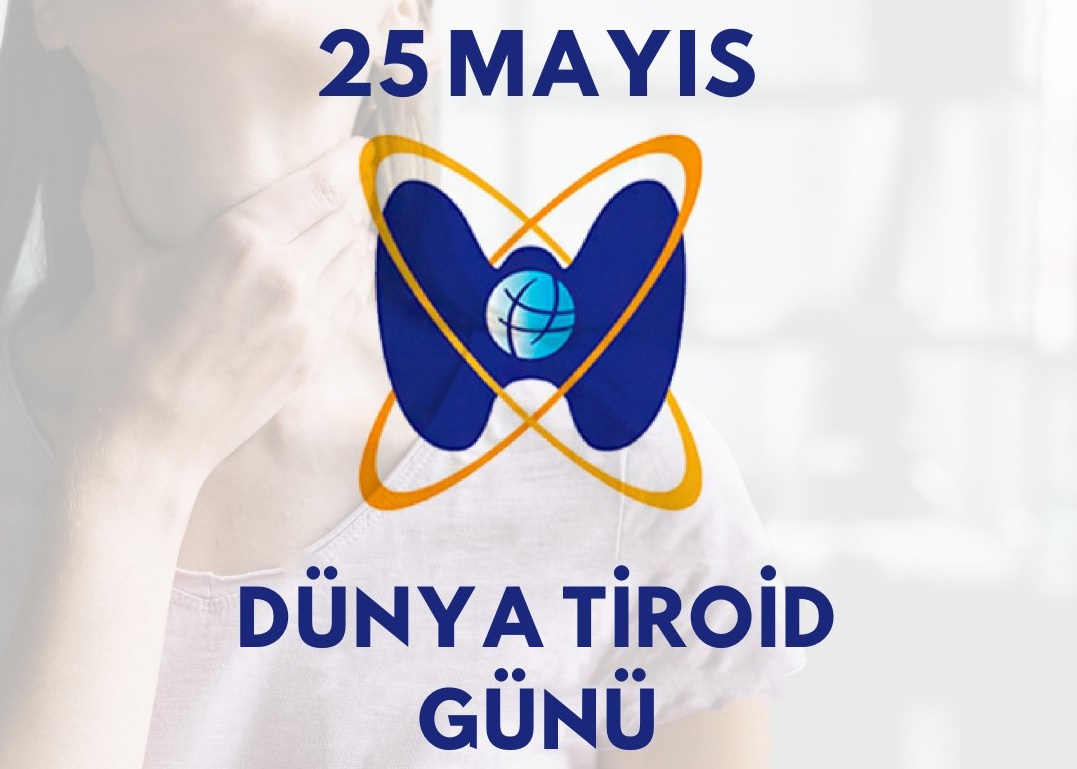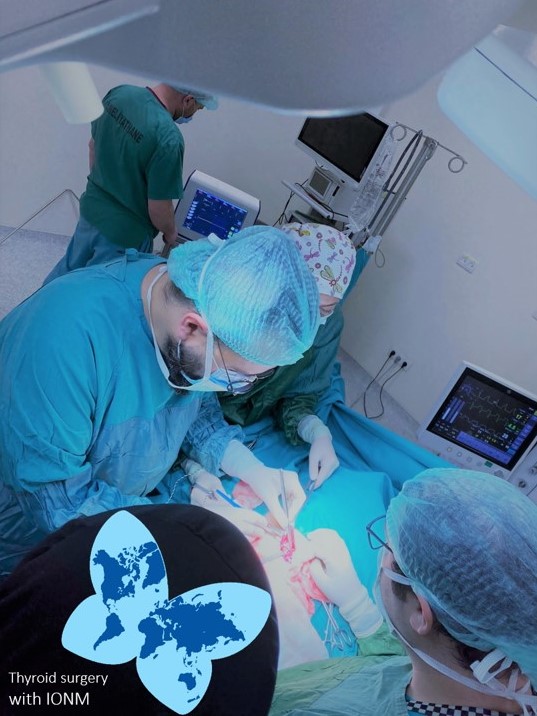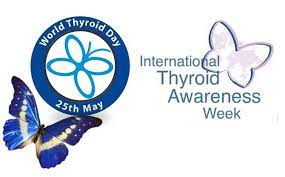GRÜ 2026 Times Higher Education World University Rankings by Subject'te Sıralama...
Üniversitemizde TS EN ISO 9001:2015 ve TS EN ISO 10002 Eğitimleri Tamamlandı
Vali Serdengeçti’den Giresun Üniversitesi’ne Veda Ziyareti
GRÜ Bilim ve Sağlık Topluluğundan İlkyardım Sertifika Eğitimi
Giresun Üniversitesi’nden Giresun’a 100. Yıl Armağanı…
Devlet Konservatuvarı’nda Devir Teslim Töreni Düzenlendi
GRÜ, Fas’ta düzenlenen Türkiye Yükseköğretim Fuarı’nda Öğrencilerle Buluştu
Alucra’da Çiftçilere Yönelik Tarım ve Hayvancılık Bilgilendirme Toplantıları Sür...
"10 Ocak Çalışan Gazeteciler Günü" Dolayısıyla Gazeteciler Cemiyeti'ne Ziyaret.....
Alucra Turan Bulutçu MYO’dan Sokak Hayvanlarına Uygulamalı Destek
“Tiroid glandı” veya “tiroid bezi”, sık kullanılan terminoloji ile basitçe “tiroid”, boynun anteriorunda lokalize olan ve her iki tarafta laterale uzanım gösteren önemli bir endokrin organdır. Bu kelebek şekilli yaşamsal organ, tiroid hormonları sekresyonu yolu ile organizma için kritik olan birçok metabolik aktiviteden sorumludur. Dolayısı ile “tiroid sağlığı” son derece önem kazanmaktadır. Bununla birlikte; tiroid bezi bozuklukları, dünya genelinde tüm yaş gruplarını etkilemeye devam etmektedir ve oldukça geniş bir bulgu ve belirti yelpazesine sahiptir. Bunlar içerisinde değerlendirilebilecek olan; hipotiroidizm (anormal olarak azalmış tiroid aktivitesi), hipertiroidili veya hipertiroidisiz tirotoksikoz (anormal olarak artmış tiroid aktivitesi), guatr (tiroid bezinde büyüme), konjenital (doğumsal) tiroid hastalıkları, tiroiditler (tiroid gland inflamasyonu), retro/substernal guatr (tiroid bezinin sternum arkasına büyüme ve uzanım göstermesi), folliküler nodüler tiroid hastalığı ile primer ve sekonder tiroid karsinomları dikkati çekmektedir. Tiroid bezi bozuklukları için, aile öyküsü, genetik ve ailesel yatkınlık, özellikle çocularda ve kadınlarda olmak üzere ilk iki dekadda (0-20 yaş), baş-boyun ve toraks bölgesine radyasyon maruziyeti, iyot eksikliği ve amiodarone gibi kullanılan bazı ilaçların etki oluşturduğu bilinmektedir. Bununla birlikte; Public Health Update tarafından, dünya genelinde 200 milyondan fazla insanın, tiroid bozuklukları ile karşı karşıya kaldığı ve bunların %50’den fazlasının hastalığın farkında olmadığı ve tanı almadığı bildirilmiştir.
Tüm organizmaya etki edebilen, bu küçük, nazik ve papillon yaşamsal organın bozuklukları ve karsinomlarının ve yine bu kanserlerin metastaz ve rekürrenslerinin; histopatoloji öncesinde ve postoperatif izlem süresince tanıları için: (i) biyokimyasal (fT3, fT4, tT3, tT4, TSH, Tg, antiTg, antiTPO, Calcitonin, TSI/TRAb, US-klavuzluğunda Tg/Calcitonin washout); (ii) görüntüleme (ultrasonografi [US], strain ve shear wave elastografi [SWE], sintigrafi, gerekli durumlarda CT ve MRI, 18-FDG PET/CT ve I131 WBS) ve (iii) sitopatolojik inceleme, uygulanagelmektetir. Bununla birlikte; tiroid ve boyun US ve özellikle de sitopatolojik inceleme günümüzde de önemini korumaktadır. Sitopatolojide ve genel olarak, folliküler nodüler tiroid hastalığında, belirsiz sitoloji (Category III, IV, V, The Bethesda System for Reporting Thyroid Cytopathology [TBSRTC], 1st and 2nd ed.s), tiroidolojide önemini ve güncelliğini korumaya devam eden, tartışmalı konulardandır. Son ATA klavuzu olan 2015 ATA Management Guidelines for Adult Patients with Thyroid Nodules and Differentiated Thyroid Cancer tarafından; anılan tartışmalı konunun merkezinde yer alan Category III, TBSRTC (AUS/FLUS, Önemi Belirsiz Atipi/Önemi Belirsiz Folliküler Lezyon) yönetiminde; kuşkulu sonografik ve klinik özellikler ve hasta tercihi de göz önünde bulundurularak, ince-iğne aspirasyon (FNA) sitolojisi tekrarı, moleküler testler ile sonrasında surveillance/gözetim-izlem veya diagnostik/tanısal cerrahi, tiroidolojide, bu zorluğun aydınlatılmasında, yeni yaklaşımlar olarak önerilmiştir (Recommendation 15A, Weak recommendation, Moderate-quality evidence; 15B, Strong recommendation, Low-quality evidence).
Prof. Dr. İker Şengül, Endokrin Cerrahisi, Genel Cerrahi
Doç. Dr. Demet Şengül, Endokrin Patoloji, Patoloji
May 25-31, International Thyroid Awareness Week & May 25, World Thyroid Day: Indeterminate Cytology, AUS/FLUS, FN, SUSP
May 25, World Thyroid Day, was officially accepted at the Annual General Meeting of the European Thyroid Association (ETA) prior to the September 2007 Congress in Leipzig, Germany. Although the date also refers to the establishment day of ETA in 1965, it is aimed to create awareness about thyroid diseases on this day. After World Thyroid Day was first celebrated by ETA, in 2010, the American Thyroid Association (ATA) declared its support for this day. In addition, May 25-31, International Thyroid Awareness Week is celebrated worldwide with the mentorship of Thyroid Federation International.
The “thyroid gland”, commonly used terminology simply “thyroid”, is an important endocrine organ localized in front of the neck, extending laterally on both sides. This butterfly-shaped vital organ is responsible for many metabolic activities that are critical for the organism through the secretion of thyroid hormones. Therefore, “thyroid health” becomes extremely important. As such, thyroid gland disorders continue to affect all age groups globally and possess a wide spectrum of signs and symptoms. Among these, hypothyroidism (abnormally decreased thyroid activity), thyrotoxicosis with or without hyperthyroidism (abnormally increased thyroid activity), goiter (enlargement of the thyroid gland), congenital thyroid diseases, thyroiditis (inflammation of the thyroid gland), retro/substernal goiter (gland growth and extension behind the sternum), follicular nodular thyroid disease with primary and secondary thyroid carcinomas are noteworthy. Family history, genetic and familial predisposition, radiation exposure to the head&neck and thorax region during the first two decades particularly in children and women (0-20 years of age), iodine deficiency, and some drugs such as amiodarone are known as the leading factors to the thyroid gland disorders. Nevertheless, the Public Health Update reported that more than 200 million people worldwide are facing thyroid disorders, and over 50% of them remain undiagnosed.
To achieve an accurate diagnosis for disorders and also carcinomas with their metastasis and recurrences before histopathology and during postoperative follow-up of this small, delicate, and papillon vital organ that can affect the whole organism: (i) biochemical essays (fT3, fT4, tT3, tT4, TSH, Tg, antiTg, antiTPO, Calcitonin, TSI/TRAb, US-guided Tg/Calcitonin washout); (ii) imaging modalities (ultrasonography [US], strain and shear wave elastography [SWE], scintigraphy and CT, MRI, 18-FDG PET/CT, and I131 WBS, when necessary) and (iii) cytopathologic examinations have been utilized. However, thyroid and neck US and cytopathological examination, in particular, still maintain their importance today. Indeterminate cytology (Category III, IV, V, The Bethesda System for Reporting Thyroid Cytopathology [TBSRTC], 1st and 2nd ed.s) in cytopathology and follicular nodular thyroid disease, in general, is one of the controversial topics which remains to be a significant topic in thyroidology. The latest ATA guidelines, 2015 ATA Management Guidelines for Adult Patients with Thyroid Nodules and Differentiated Thyroid Cancer, recommended repeat fine-needle aspiration (FNA) cytology, molecular tests with further surveillance or diagnostic surgery, considering worrisome sonographic and clinical features with patient preference, as novel approaches in thyroidology to resolve the challenging issue, Category III, TBSRTC (AUS/FLUS, Atypia of Undetermined/Follicular Lesion of Undetermined Significance), which is at the center of the aforementioned controversion (Recommendation 15A, Weak recommendation, Moderate-quality evidence; 15B, Strong recommendation, Low-quality evidence).
Prof Ilker Sengul, MD, Endocrine Surgery, General Surgery
Prof (Assoc) Demet Sengul, MD, Endocrine Pathology, Pathology








